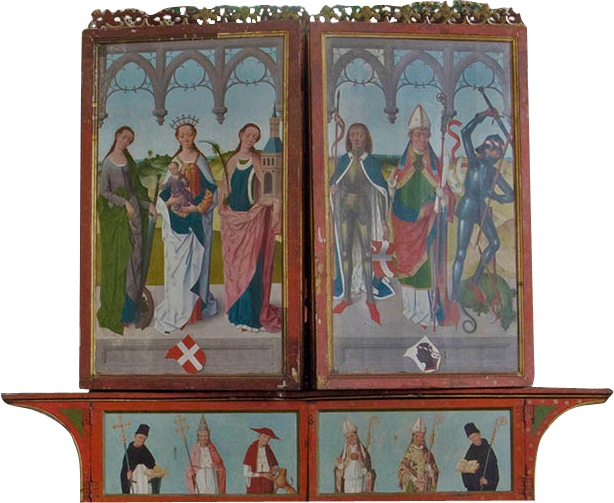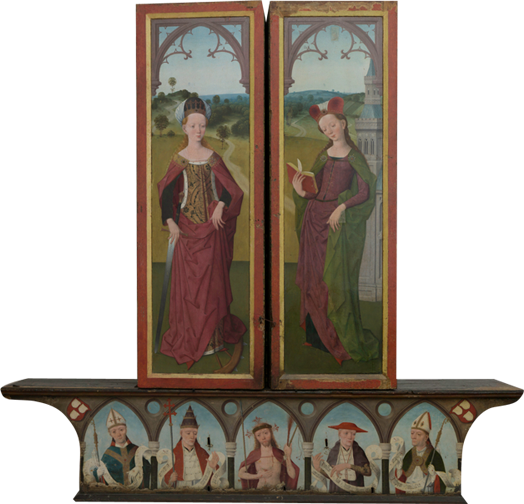Little is known about Hermen Rode. There is hardly any mention of him in the Lübeck archives. He was likely born in the first half of the 15th century, was married but probably didn’t have any children, and died in June 1504. Looking at the altarpieces he created, Rode must have been one of Lübeck’s most important artists. Despite that, researchers have had a hard time pinpointing his artistic roots. Lübeck seems to have lacked artistic influences that helped him develop his style. Rode presumably spent his formative years in the western regions, either in the Lower Rhine region or in the Netherlands, where he learned new forms of expression.
A number of altarpieces have been attributed to him, although only one bears his signature: the altarpiece of St. Luke, executed in 1484 for St. Catherine’s church in Lübeck (today in St. Anne’s Museum in Lübeck). One of Rode’s most imposing works of art is the altarpiece of the high altar of St. Nicholas’ Church in Tallinn.
Several of the altarpieces attributed to Rode are today located in different parts of Sweden and seem to have been made specifically for the Swedish market, as they include depictions of national Swedish saints. Of these paintings, a few are now in the Swedish History Museum, and others are in churches around the country, e.g. the Sorunda and Salem altarpieces.
In the case of large works, different stages of work were carried out by different masters, such craftsmen as woodcarvers, joiners, painters etc. The paintings on the winged altarpieces were executed by Hermen Rode, and the woodcarver(s) responsible for the sculptures is (are) in many cases still unknown.


